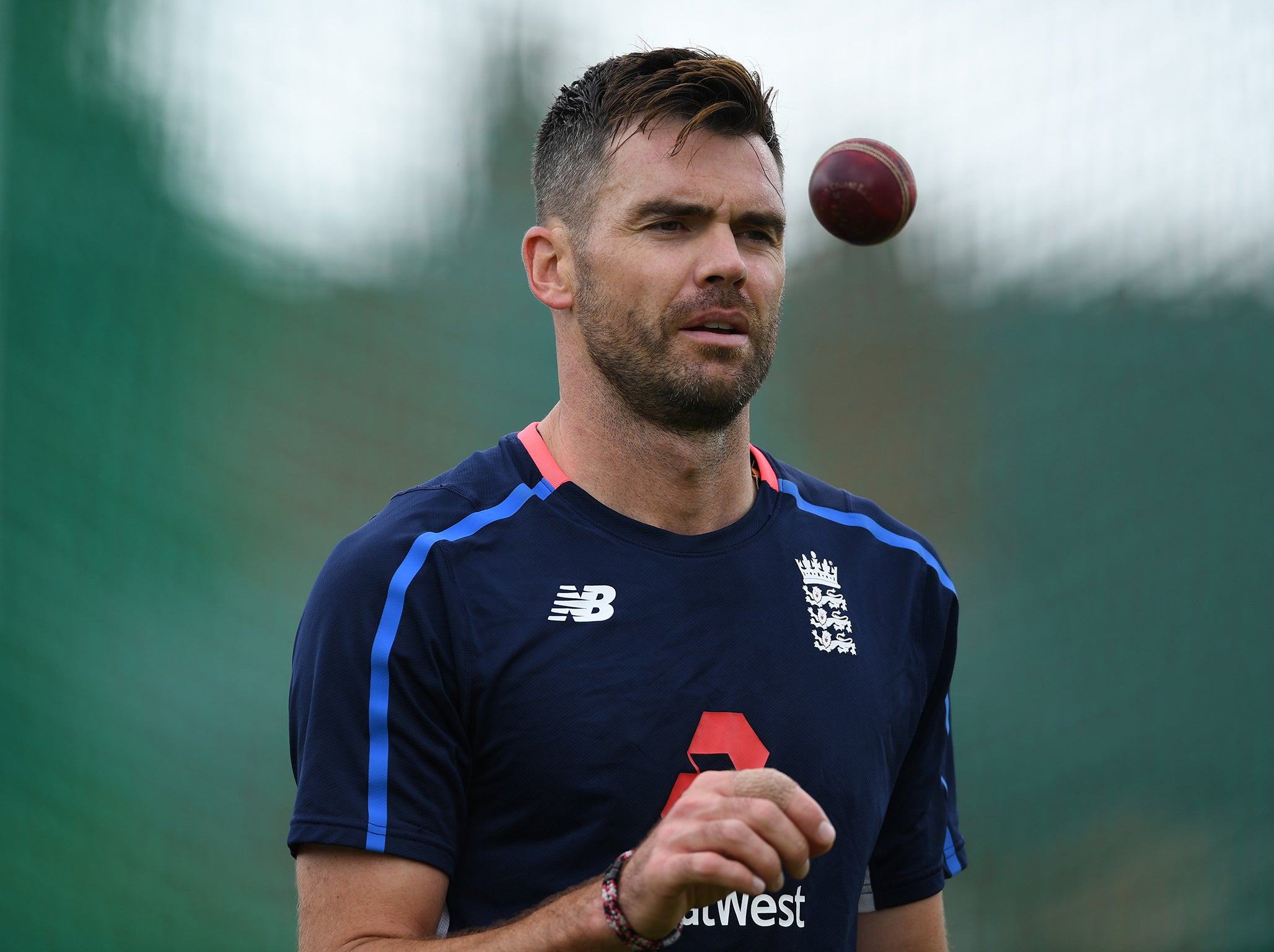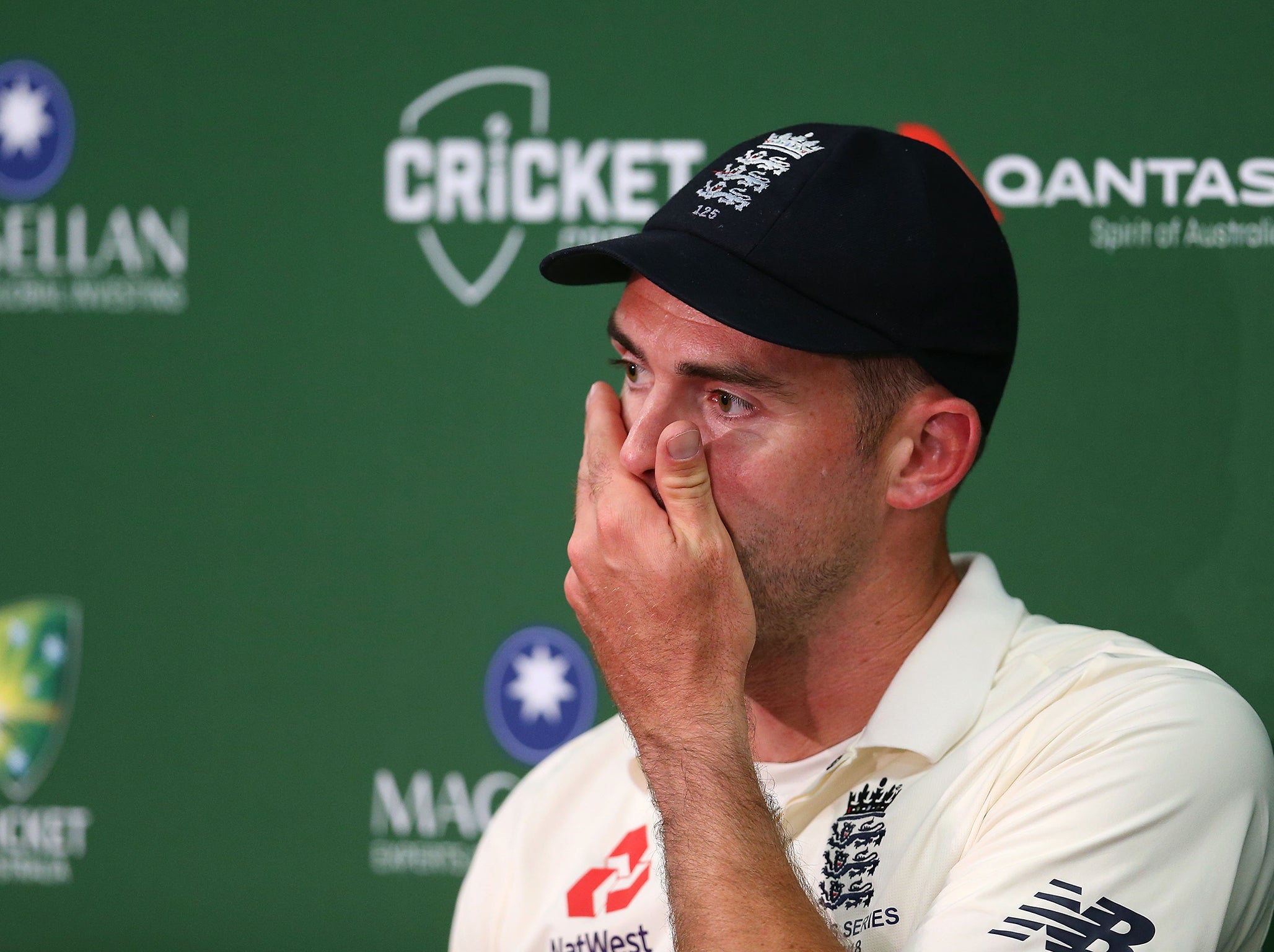James Anderson reverses the customary process of ageing and decline to retain centre stage for England
Anderson hasn’t just resisted the customary process of ageing and decline. He’s reversed it

Your support helps us to tell the story
From reproductive rights to climate change to Big Tech, The Independent is on the ground when the story is developing. Whether it's investigating the financials of Elon Musk's pro-Trump PAC or producing our latest documentary, 'The A Word', which shines a light on the American women fighting for reproductive rights, we know how important it is to parse out the facts from the messaging.
At such a critical moment in US history, we need reporters on the ground. Your donation allows us to keep sending journalists to speak to both sides of the story.
The Independent is trusted by Americans across the entire political spectrum. And unlike many other quality news outlets, we choose not to lock Americans out of our reporting and analysis with paywalls. We believe quality journalism should be available to everyone, paid for by those who can afford it.
Your support makes all the difference.It was late December, and in a small room in the bowels of the Melbourne Cricket Ground, James Anderson was slumped in a chair, down and out. The Ashes were gone, and Anderson very nearly was too. His white trousers were stained with dried blood. His chronic shoulder injury was beginning to throb. His feet were weary from pounding the hard Australian earth for two months. He looked so fed up, indeed, that it was tempting to wonder how much more he had left to give.
But then, perhaps we all should have known better. If Anderson looks like death on his bad days, than on his best days he shimmers with life. Eight months on from his Ashes ordeal, Jimmy was back at Lord’s, and as good as ever: shuffling in, hitting his lengths, swinging it around corners. Nine Indian wickets for just 43 runs in the second Test helped consolidate his place at the top of the world rankings, just a couple of weeks after he turned 36.
Anderson hasn’t just resisted the customary process of ageing and decline. He’s reversed it. Since the start of 2016, he averages under 20 in Test cricket. On Monday he breached the 900-point barrier in the world rankings for the first time, the first England bowler to do so since they were introduced in the 1990s. Somehow, against the ravages of time, Anderson has not merely maintained his standards, but significantly improved them.
“There’s been chat about his longevity, but at the minute he’s bowling better than he ever has,” his captain Joe Root observed. “Even though the conditions suited, you’ve still got to ask the right questions of the batters. Throughout the whole game, he did just that.”

This goes against everything we think we know about fast bowling, whose ruthless toll on the body burns out even its best practitioners early. Fred Trueman and Dennis Lilllee were all done at 34, Malcolm Marshall 33. Dale Steyn has played just four Tests in the last two years. Anderson, by contrast, has taken 73 wickets since his 35th birthday alone, and indeed the only fast bowlers to take more are Glenn McGrath (82), Richard Hadlee (116) and Courtney Walsh (180).
“If you compare him with other bowlers around the world, a lot do start to drop off in their mid-30s or so,” said England coach Trevor Bayliss. “It’s only the very, very best that are able to keep it going. He’s not just good when the conditions suit him. But in these conditions, he’s the best in the world.”
When Bayliss assumed the job in 2015, he would have assumed that part of his brief would be to nurture a successor for Anderson. “There’s always that thought process,” he admitted. “Is it Chris Woakes? Is it Ben Stokes? Is it someone else new and younger coming through?” Instead, it looks increasingly like Anderson will outlast Bayliss, who will leave his role at the end of next summer.
The most obvious parallel is with Walsh, the great Jamaican who emerged from unheralded beginnings to become one of the game’s great fast bowlers, simply by lasting longer than anyone else. For Walsh, there was always a difference between fitness and match fitness. The only way to prepare your body for the rigours of bowling 30 overs in hostile conditions was to do it, again and again. And so Walsh’s cruel tutelage - the man who would bowl into the wind while Marshall or Curtly Ambrose took their preferred end - ended up strengthening him in the long run.
Like Walsh, Anderson has benefited from a slow start. Walsh had played just 13 Tests by the time he turned 25, whereas Anderson - who spent his early years in and out of the side, his action modelled and then remodelled, his confidence brittle - had played just 17. This the same reason Stuart Broad, who is similarly diligent but had many more miles in the legs at the same age, will probably not be charging in with Anderson’s vigour in 2022.
Steyn, watching the second Test on television, had another observation. “I love how quick Jimmy is between deliveries,” he tweeted. “No stares, no words, no fuss. Gets back to his mark, bowls with intent, intelligence and great energy. Man knows what he wants (wickets), and most of all, he knows how to get them.”

And there is no doubt Anderson has learned to husband his emotional as well as his physical energies. Just as he knows when to stop training, he knows better than to get embroiled in verbals or psychological confrontation in the middle. In a way, the sight of a silent Anderson marching straight back to the end of his run with the ball gleaming in his right hand is more intimidating than any pre-packaged sledge.
So how long can he go? Walsh went on until 39, and later said he could probably have gone on further. Bayliss, for his part, believes Anderson could even hit 40. “As long as he keeps his body fit,” he said, “there’s no reason why he can’t go on for three or four years. He keeps surprising everyone.”
Join our commenting forum
Join thought-provoking conversations, follow other Independent readers and see their replies
Comments